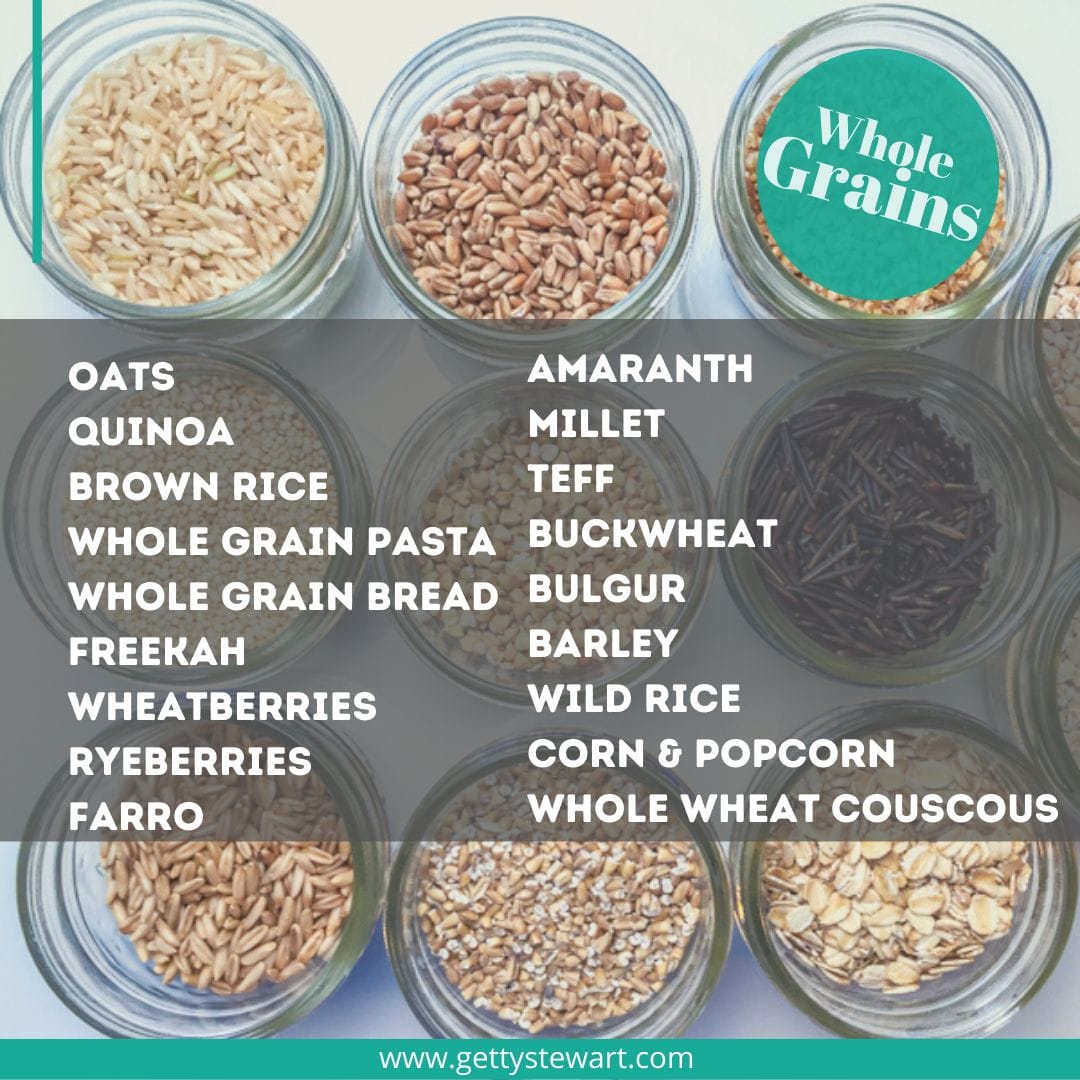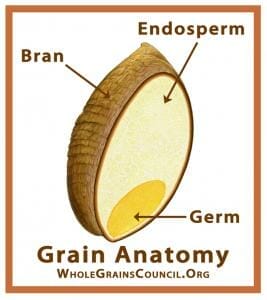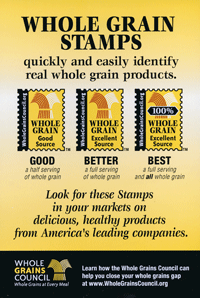Everything You Need to Know about Whole Grains

Eat more whole grains is the advice we often hear. But what does that look like? If you’ve ever wondered about whole grains, this article is for you.
Also Read: How to Cook and Freeze Whole Grains, Why Whole Wheat Does NOT Mean Whole Grain, Tabbouleh – Whole Grain Salad
Post Contents – Read on to learn:
What are Whole Grains
Canada’s Food Guide Recommendation
How to Identify Whole Grain Products
The Health Benefits of Whole Grains
What Makes a Serving
How to Incorporate More Whole Grains into Our Diets
How to Cook and Freeze Whole Grains
Whole Grain Recipes
What Are Whole Grains?

Whole grains are those that contain all three parts of a grain kernel – the bran, the germ and the endosperm.
The American Association for Cereal Chemists (AACC), the internationally recognized leader on cereals, defines them as those “consisting of intact, ground, cracked or flaked grain whose principal components – the endosperm, germ and bran are present in the same relative proportions as they exist in intact grain.”
Refined grains are processed. Some or all of the bran or germ, the most nutrient rich components of grain, are removed; e.g. white rice, pasta and white flour. Refined grains are everywhere! They’re the most common grains used at home and in processed foods. While some refined grains are enriched with vitamins and minerals, according to Registered Dietitians with EatRightOntario, you’ll get more fibre and nutrients eating the whole version.
I was surprised to see bulgur, rolled oats and even instant oats on the list. That’s because even though they are processed with heat and crushed or rolled, they still contain all three components of the grain.
Just as interesting is the fact that Canadian, 100% whole wheat flour is NOT on the AACC’s list because Canada’s Food and Drug Regulation permits up to 5% of the kernel (bran and germ) to be entirely removed. Losing 5% bran and germ means our whole wheat flour and consequently our 100% Whole Wheat Bread is not considered whole grain. Crazy, right!
Canada’s Food Guide Recommendation
Canada’s Food Guide says “Choose whole grain foods”. The new Guide doesn’t give us serving sizes or how much per day, it just encourages us to reach for whole grains whenever we can. For their suggestions read more here Canada’s Food Guide.
What to Look for in the Store?
You have to read the ingredient list. Don’t rely on packaging claims on the labels, go directly to the ingredient list and look for the following as one of the first ingredients listed:
“whole grain [insert name of grain]” or “whole grain [insert name of grain] flour”
For example “whole grain wheat” or “whole grain wheat flour”.
Ignore front of packaging claims and labels like “multigrain”, “ancient grains”, “all natural”, “organic” or “made with whole grains”. They do not provide sufficient information to determine if a product is whole grain or not. “Made with whole grains” sounds promising, but this claim does not indicate how much whole grain was used. The ingredient list is the place to go for accurate information.
There is a symbol that states if a food is made with whole grains and what percentage, however it is only available to companies that pay to be part of the program – so not every product that is whole grain will feature this symbol. The Whole Grain Symbol is administered by the American Whole Grains Council which provides more details on how it works. It also has a Canadian Stamp program which look like the following.

What are the Health Benefits?
Whole grains are higher in fibre, vitamins and minerals than refined or enriched grain products. And according to EatRightOntario, research shows that people who eat more whole grains may have a lower risk of heart disease, stroke, diabetes, and some cancers.
Cara Rosenbloom, Registered Dietitian with The Heart and Stroke Foundation says “People who eat three or more servings of whole grain foods each day have up to 30 percent less risk of developing heart disease compared to people who rarely eat whole grains.”
The Canadian Diabetes Foundation also recommends choosing whole grains instead of refined grains due to the high fibre content in whole grains. Fibre is important for your overall health because it helps to control blood sugar, manage blood pressure, reduce blood cholesterol, regulate bowel movements and manage weight by increasing the feeling of being full.
Clearly, it is in our best interest to choose whole grain products when we can.
Luckily for us, whole grain options are becoming much more accessible.
What is a Serving of Whole Grain?
Our goal is to get 3-4 servings of whole grains per day (based on the old Food Guide). One serving might be:
- 1 slice of whole grain bread
- 1/2 whole grain bagel
- 1/2 cup cooked whole grain (brown rice, quinoa, bulgur, barley, buckwheat)
- 1/2 bran muffin
- 1/2 whole wheat tortilla
- 30 g of whole grain crackers (about 10 crackers)
- 1 cup ready to eat cereal – whole grain
- 1/2 cup oatmeal
- 1/2 cup cooked whole grain pasta
- 2 cups air-popped popcorn – YES! popcorn is a whole grain, but watch the butter and salt.
How Can We Incorporate More Whole Grains into Our Diet?
Breakfast, snack, lunch and dinner all present opportunities to select whole grains. Making the switch from refined grains to whole grains does require some adjustment, but our health is worth the effort. And, if you’re like a lot of people I’ve talked to, once you get used to the flavor and texture of whole grains, you won’t want to go back to the more bland refined grains.
Here are some ways for us to make whole grains part of our every day.
- If making a complete switch from white rice to brown rice or corn flakes to bran flakes is too big a leap, start gradually by mixing the two in one dish then over time increasing the ratio of whole grain to refined grain.
- Use whole wheat flour, wheat germ and bran into baking recipes. In most baking, you can substitute half of the white flour with whole wheat flour without changing anything else. It’s a start in the right direction even if it’s not quite whole grain. Check out my homemade sandwich bread and hamburger bun recipes made with 50% whole wheat flour.
- Choose whole grain breads, pitas or tortillas for sandwiches, wraps and quesadillas. Check the ingredient list – one of the first ingredients listed should be “whole grain [insert name of grain]”.
- Try whole grain pasta in place of regular pasta. Yes, it cooks differently and tastes a little more nutty and chewier than the refined version – try it mixed in a baked pasta dish where it may be less obvious.
- Use barley, wild rice, brown rice in soups or stews where those not used to the flavor and texture of whole grains may not notice as much.
- Experiment with bulgur, wheatberries and quinoa in cereals, salads or soups.
- Pick breakfast cereals made with whole grain, bran or oats and are high in fibre. Even if they may not be whole grain, at least opt for high fibre.
- Try steel cut oatmeal, amaranth, teff or 7 grain cereals for breakfast.
- Add whole grain breadcrumbs or oats to recipes containing ground meat or poultry.
- Use rolled oats, oat bran or crushed wheat bran cereal in recipes to replace dry bread crumbs.
- Need gluten free? Try oats, buckwheat, brown rice,and quinoa, amaranth, teff, wild rice, quinoa or millet. They’re all whole grains that are gluten free. For oats, especially, check the label to ensure the grains have not been cross-contaminated during processing.
- For added flavor, cook grains in stock instead of water.
- For even more flavor, saute aromatics like onions, garlic, celery and even mushrooms in a little oil and then add the dried grains to the mix for 1 to 2 minutes before adding the water to cook grains like rice, quinoa, bulgur, barley, wheatberries, etc. Yummy!
How to Cook and Freeze Whole Grains
Are you ready to get cooking? Head on over to Cooking and Freezing Whole Grains where you’ll find a handy dandy Whole Grains Cooking chart and all the info you need to freeze cooked whole grains. There’s just too much info to repeat it all here. Trust me, it’s worth the click.
Whole Grain Recipes on This Site
And finally, here are some of the whole grain recipes I’ve posted over the years.
- Wheat Berry Salad with Chickpeas, Feta and Greek Dressing
- Kale, Butternut Squash and Farro Salad
- Wheatberry and Saskatoon Salad
- Quinoa and Black Bean Salad
- Vegetable Quinoa and Red Lentil Soup Mix
- Parsley and Barley Salad
- Beef and Barley Soup
- Lime and Corn Quinoa (hot side dish)
- Brown and Wild Rice Pilaf
- Wild Rice Stuffed Acorn Squash
- Southern Beef ‘n Brown Rice
- Soup Mix in a Jar
- Crunchy Oat and Honey Granola Bars
- Carrot Cake Granola
- Homemade Granola
- Grapefruit and Granola Parfait
- Homemade Instant Oatmeal
- Nutty Cranberry Oat Muffins
- Chocolate Chip Oatmeal Cookies
- Coffee Lover’s Energy Bars
- Homemade Chocolate Energy Bars
A lot of my baking also includes whole wheat flour to increase the fibre and nutrient value of those foods. Most recipes can easily accommodate replacing half the all purpose flour with whole wheat flour – without doing anything else. Why not give it a try?
Breakfast, lunch, dinner and snack time – something for any time of day.
Let me know if you try any of the above and how you’re doing with the 3-4 servings of whole grains per day.
Sign up to get articles by Getty delivered to your inbox. You’ll get recipes, practical tips and great food information like this. Getty is a Professional Home Economist, speaker and writer putting good food on tables and agendas. She is the author of Manitoba’s best-selling Prairie Fruit Cookbook, Founder of Fruit Share, a mom and veggie gardener.


My celiac disease makes getting enough whole grains (and therefore fiber) a bit of a challenge. I can only eat so much rice and quinoa. Any other ideas?
Hi Rhonda, I can only imagine how challenging it must be. Check out the Cooking with Grains chart to see some of the GF (gluten free) whole grains. Amaranth, buckwheat, millet, oats (read label to ensure there is no cross-contamination) and teff are some other options other than quinoa or rice. For gluten free recipes check out http://www.faithfullyglutenfree.com. Jeanine is from Manitoba, has an amazing website, is author of the Everything Guide to Gluten Free and writes based on her own experience with celiac disease. Good luck.